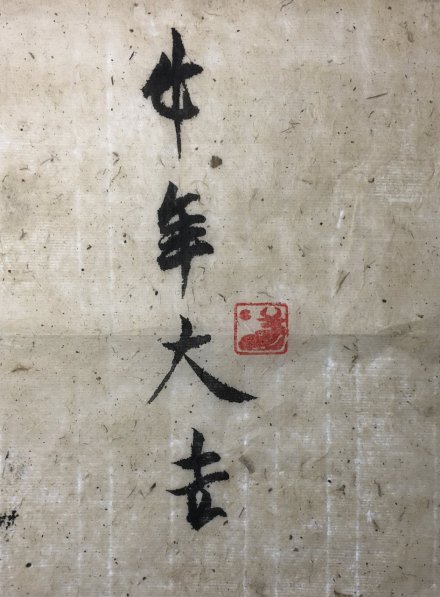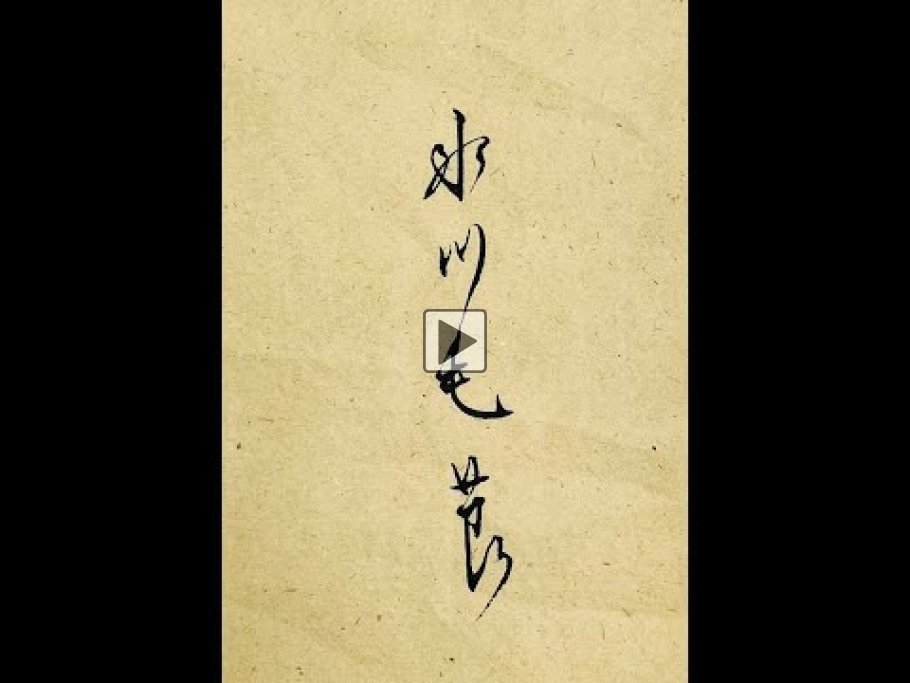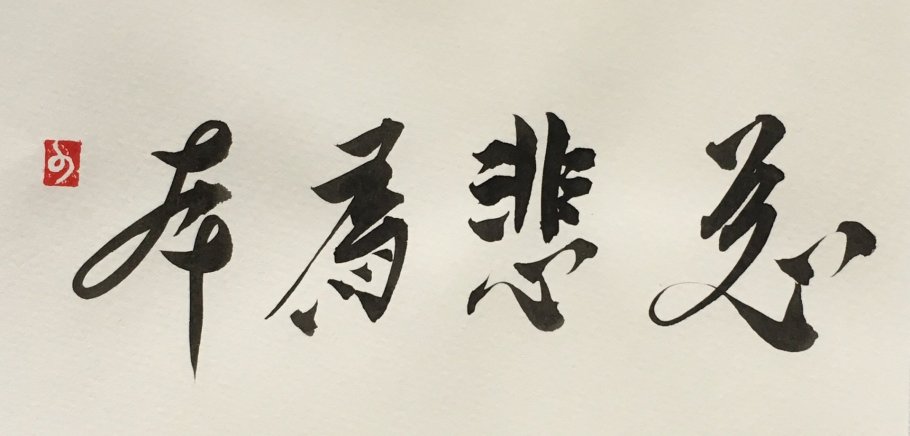书法
"Rien n'est plus difficile qu'un trait, personne ne sait combien il faut penser un trait"
Pablo Picasso
The word calligraphy in the West means beautiful writing.
In China, esteemed for two thousand years, it is an art and is considered the ideal aesthetic act of artistic achievement. It is defined as superior to painting, which is a direct emanation from it.
Often considered an abstract art for Westerners, it nevertheless attracts attention.
In China, calligraphy has a part of beauty but behind it there is more.
Being a good calligrapher requires a lifetime of effort. It requires an interior preparation, one dedicates oneself entirely to one's art and in the belief of the primordial breath which unites us to the sky (cosmological) and to the earth. Man presents this link between heaven and earth.
The practice of calligraphy is the passage of the primordial breath in us with an idea of transparency, of availability by removing any obstacle so that this breath which passes through our body, in the shoulder, the arm, the wrist, the brush until at its point which will trace a line which cannot be taken up or corrected and which must arrive in its perfect accuracy and in its life. The calligraphic line is life on paper, like a dancer practicing a movement many times to achieve the excellence of his art.
The art of gesture
Chinese characters are each written according to an immutable stroke order. Learning to write a typeface means learning to draw its elements in a prescribed order, which derives from a certain number of rules. Over time the hand gets used to the sequence and executes it without further hesitation, transforming it into a unique gesture.
Calligraphy is giving life to the vital breath to establish a link between man and the universe.
As François Cheng puts it so well in his book And the breath becomes a sign: "calligraphy is a seismograph of our inner truth , when the true and the beautiful have consented to leave their fleeting and indelible imprints".
The order of the strokes being imposed and retouching impossible, the spectator can retrace the artist's journey step by step, decipher the pressures of the brush, guess the additions of ink and thus enter into communion with the calligrapher.
We thus find the two currents of Chinese philosophical thought, Confucianism for the social dimension and Taoism for the natural approach.
Renoncules des glaciers
冰川毛茛
2022
In Chinese calligraphy or painting, the brush stroke is not a simple line or the simple outline of things.
Born from calligraphic art, it has multiple implications. By its fullness and its looseness and by the Void that it surrounds, it represents form and volume; by its “attack” and its “thrust” it expresses rhythm and movement; through the play of Ink it suggests shadow and light; finally, by the fact that the execution is instantaneous and without retouching, it introduces the vital breaths, more than the external resemblance, what the Line seeks to capture, it is the 里 (li), that is to say say the "inner line" of things.
In Chinese calligraphy or painting, the brush stroke is not a simple line or the simple outline of things.
Born from calligraphic art, it has multiple implications. By its fullness and its looseness and by the Void that it surrounds, it represents form and volume; by its “attack” and its “thrust” it expresses rhythm and movement; through the play of Ink it suggests shadow and light; finally, by the fact that the execution is instantaneous and without retouching, it introduces the vital breaths, more than the external resemblance, what the Line seeks to capture, it is the 里 (li), that is to say say the "inner line" of things.
By the variations of line thickness, its curves and its movements, the brush testifies to the personality and lets express the impulses and the aspirations of the artist.



